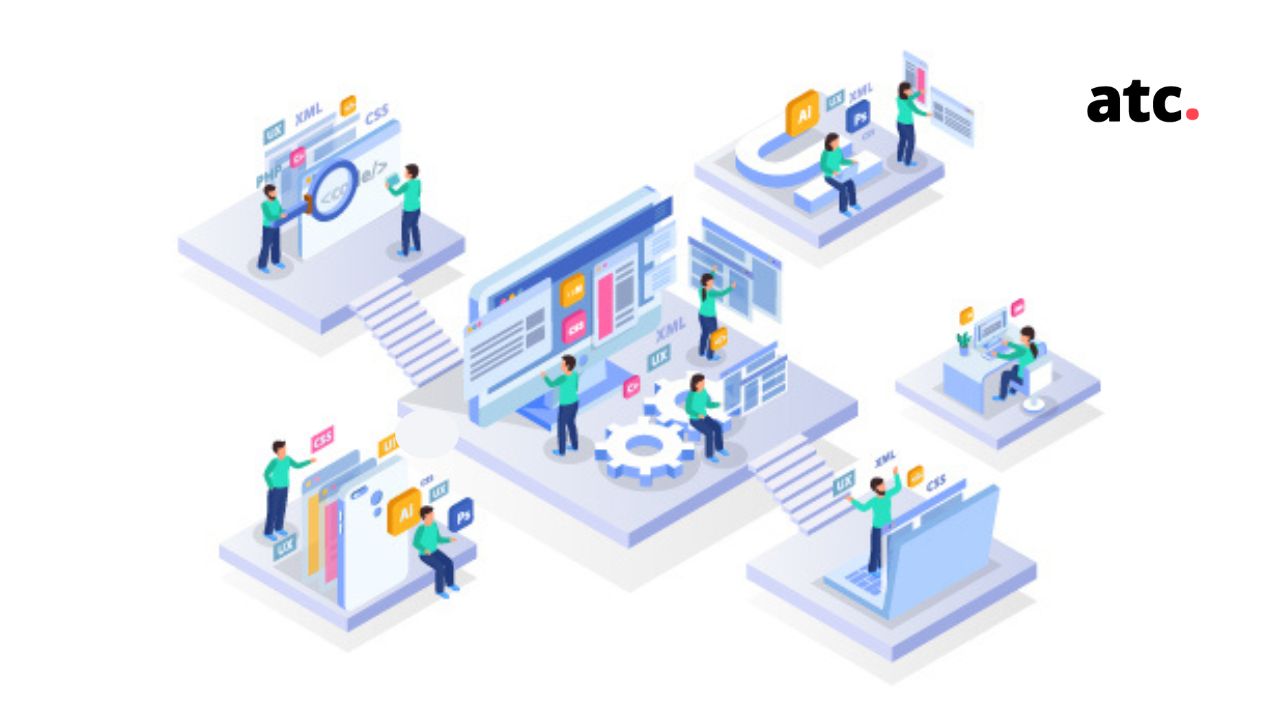Subscribe to the blog
There are many types of software testing that you can use to improve your products. How much of a company's budget is spent on quality assurance and testing? In a report published by Statista, as of 2019, a whopping 23% of their organization's yearly IT budget was spent on quality assurance and testing. This was estimated by a panel of CIOs and senior technology experts.
More and more companies are realizing that it’s not enough to build good software, it needs to be rigorously examined, benchmarked, and verified. Consumers will often forgo updating their devices, for example, in order to avoid bugs and glitches commonly found in new software updates and rollouts.
That’s not to say companies have to find every flaw in their application before putting it on the market, but you do have to find the majority of them.
But how do you test software?
Well, there are numerous types of software testing and we’re going to cover a large handful of them in today’s post.
But before we do, let’s quickly review what software testing is.
What is Software Testing?
Software testing is the analysis of a software application for bugs, glitches, gaps, or errors. Essentially, it’s the identification and elimination of any defects in the software code to ensure the software behaves the way it was programmed and delivers expected results.
There are 2 ways to accomplish this task:
- Manual testing
- Automated testing
Let’s take a look at each of them.
Manual Testing
Manual testing is when a QA (quality assurance) analyst runs tests on software without the use of automated programs. The human tester will interact with and check the features of the application in the same way an end-user would, providing essential feedback on the user experience as well as any bugs that haven’t been worked out by the developers yet.
Automated Testing
Automated testing is when a QA analyst uses various programs and scripts to identify errors in software code. These programs allow testers to find bugs much faster than they would be performing the same checks manually.
The 2 Major Testing Methodologies
We’re going to cover the different types of software testing in just a moment, but we wanted to first point out the 2 big testing methodologies you should know. They are:
- Functional testing
- Non-functional testing
Let’s dig into them a bit deeper.
Functional Testing
Functional testing is when testers focus on the functionality of the software - the jobs and tasks the software is intended to perform.
It has nothing to do with security or usability (that’s non-functional testing, which we’ll detail in a minute).
It has everything to do with the expected output of the software. Meaning, if you tap a button, you should receive the outcome the software was programmed to deliver.
So functional testing determines how well software executes its features.
Non-Functional Testing
Non-functional testing is when testers focus on the non-functional aspects of the software - the performance and experience of its features, instead of the features themselves.
Non-functional aspects of the software include:
- Capacity and space
- Response time
- Scalability
- Portability
- Robustness
- Interface
- Security
- Integration
- User experience
And so on.
Non-functional testing will determine the “readiness” of software - how well it behaves for end-users, not just that it does what it’s supposed to do.
Types of Software Testing

Having different types of software testing at your disposal helps you make better products.
Now that you have a foundational understanding of testing, let’s look at a large variety of the types of software testing you can perform.
1. Unit Testing
Unit testing is when you analyze a single component or individual module. It’s usually performed by a programmer as opposed to a QA tester because it requires a deep understanding of the software design and code.
To test one particular element of software, you have to go into the code at the lowest level. The tests treat each segment of the software as a self-contained part to see if they work on their own without fail - but it tells the tester very little about how they will work together.
2. Manual Unit Testing
Manual unit testing goes through the unit testing process we just detailed above but without the aid of automated tools and programs.
Manual unit testing is often conducted before any other type of testing, in part, to make sure the software can handle automated programs crawling it.
3. Automated Unit Testing
Automated unit testing is when you use specialized programs, instead of a human, to test the individual components of your software. This dramatically speeds up the software testing process.
4. Integration Testing
Integration testing is the second level of testing following unit testing that determines if all the units of the software operate in harmony with one another.
This includes testing:
- Units
- Modules
- Applications
- Client and server applications on a network
- Etc.
While a unit may have been determined functional, it may cause problems when interacting with other units in its system.
5. System Testing
System testing is a form of integration testing that tests the final software product in relation to the computer system it’s a part of. It is the third major testing stage. Since software interfaces with other software and hardware systems, you have to make sure your product works properly with all of it.
There are two forms of system testing:
- Black box testing
- White box testing
6. Black Box Testing
Black box testing is when the software tester does NOT know the design structure or the implementation of the software they’re testing.
This test simulates the perspective of the end-user and ensures the tester evaluates the software without bias. Among the different types of software testing, this is a very high-level type of testing.
7. White Box Testing
White box testing is when the design structure and implementation of the software are known beforehand.
The purpose of white box testing is to check the functioning of conditions, branches, paths, and code within the final product. This is considered to be on a lower level when compared to other software testing methods.
8. Acceptance Testing
Acceptance testing or user acceptance testing (UAT) is when you test the total functionality and usability of the software.
An acceptance test is typically run by the client and validates the entire flow of the system to ensure it conforms to the client’s requirements and end-user expectations.
UAT is the last phase of testing before the software goes into production.
9. Alpha Testing
Alpha testing is the top dog in the software testing industry. The purpose of alpha testing is to discover and fix every possible issue before putting it on the market and into the hands of your customers.
Alpha testing relies on both black box and white box techniques and is conducted inside a lab environment.
10. Beta Testing
Beta testing is when select customers interact with the first iteration of a piece of software. It’s performed in what’s called the “Real Environment.”
The purpose of beta testing is to discover any lingering or hidden bugs and glitches that the developers missed. Customers share their feedback about the software and you can use that feedback to root out any major failures and prepare the software for the actual release to the general public.
11. Smoke Testing
Smoke testing allows developers to identify any “showstoppers” hidden in their code.
A showstopper is a bug or defect that stops or restricts further testing. It presents a bottleneck to testers and unless it’s resolved, testing cannot continue.
If showstoppers are found early on, it’s a signal to the development team that they need to completely rework a certain module or unit. The goal of this method of software testing is to eliminate all showstoppers as early as possible to ensure smooth development.
12. End-to-End Testing
End-to-end testing usually occurs after system testing and involves literally testing each element of the software from beginning to end to ensure continuity and flow for the end-user.
The goal is to simulate real-world use so you know the customer will be able to achieve their goals when they use the software.
For example, if you were developing the Groupon app, an end-to-end test might look like this:
- Open the app.
- Search a keyword like “massage.”
- Scroll through the results.
- Click on a massage Groupon.
- Buy the massage Groupon.
- Find the Groupon stored inside the user’s account and in the user’s email inbox.
If there are any issues during this process, then you’ve found a glitch and can correct it.
13. Ad-Hoc Testing
Ad-hoc testing is an informal and random test without any plans or documentation. The purpose is to find defects that were missed or overlooked by regular test cases.
It’s reminiscent of Chaos Monkey as developed by Netflix, which we detailed in our post about DevOps interview questions.
Anyone can perform an ad-hoc test and attempt to “break” the application by testing odd flows or arbitrary functionalities.
This form of software testing is difficult but can help you identify bugs you wouldn’t ordinarily find.
14. Graphical User Interface (GUI) Testing
GUI testing allows you to evaluate the GUI based on your client's requirements and/or customer feedback.
The goal is to make sure that customers understand the UI and how to interact with it and use it. If it seems too complex or “busy” - too many buttons to push, or images pushed together, or text on top of each other - then the user will probably not use the application.
Here’s a list of the things testers may look at during a GUI test:
- Size, position, width, length, and color of various objects, characters, fonts, or numbers.
- Execution of functions.
- The display of error messages.
- Clear demarcation of sections within the app.
- The alignment of text and images.
- The aesthetics of all visuals.
- Clarity of images.
15. Compatibility Testing
Compatibility testing lets you see how your software will function in a variety of different environments, such as:
- Web servers.
- Hardware.
- And networks.
16. Backward Compatibility Testing
Backward compatibility testing is when you test whether the new software (or updated version) works with older versions of the environment it operates within.
17. Browser Compatibility Testing
Browser compatibility testing is when you check web applications for any errors to ensure it will perform the way it’s supposed to in different browsers and operating systems.
18. Backend Testing
Backend Testing is when you test the database of your software which stores the inputted data from the frontend.
There isn’t any graphical user interface (GUI) involved here; testers are connected directly to the database to verify data. The database can be any of the following:
- PostgreSQL
- MySQL
- Microsoft SQL server
- Oracle
- IBM DB2
- SAP
This type of software testing is absolutely essential because if there are any issues found like data loss or corruption, the rest of the software will fall apart.
Testers generally try to validate:
- Keys and indexes.
- Columns.
- Database tables.
- Schema.
- Etc.
Get 1 Week of Software Testing Absolutely Free ($5,000 Value, No Strings Attached)
Software testing is expensive and difficult to undertake. Especially if you’re doing it in-house.
But it doesn’t have to be.
ATC will give you 1 week of free testing covering the following areas:
- Security Testing
- Performance Testing
- Automation Testing
- DevOps Testing *
- OWASP Testing
- Compatibility Testing
- Mobile Testing
- Penetration Testing
- Vulnerability Testing
If you want $5,000 worth of free testing, then go ahead and get it today.




